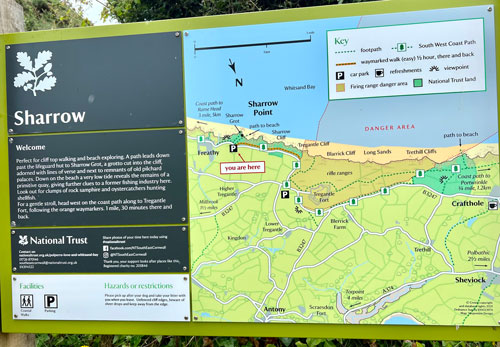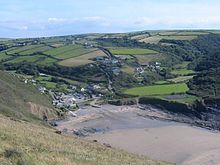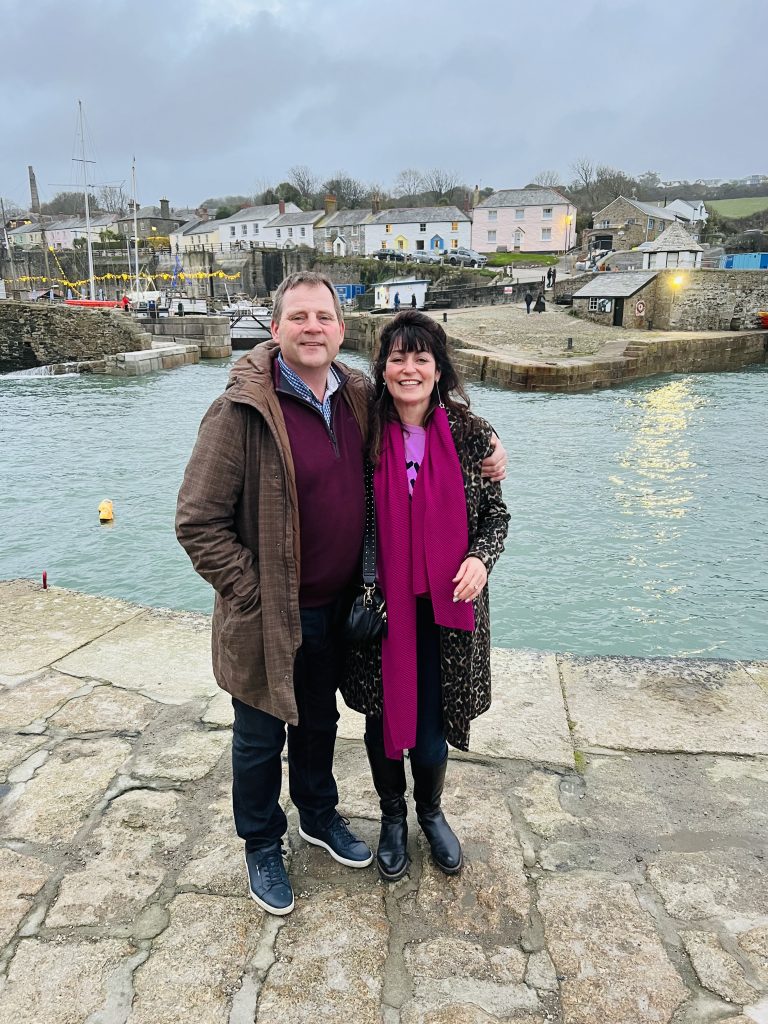Looe is made up of East Looe and West Looe, located either side of the river. The two Looe’s are joined together by a bridge across the Looe River, and have subtly different characters
East Looe is home to the harbour and main shopping centre while West Looe is quieter but also has shops, restaurants and hotels
Looe has been a holiday resort for over 200 years. In 1879, the arrival of the railway sealed the deal: Looe was officially a holiday destination, but even before this Looe was an early adopter of wheeled bathing machines next to the Banjo Pier
On paper, Looe is similar to Fowey: a steep valley leading down to a river, along the same stretch of coast… However, that’s where the similarity ends. Fowey is all about yachts, literature and boutique hotels, while Looe is unashamedly B&Bs, buckets & spades, and fish & chips
There’s room for both, of course, and Looe still packs in plenty of seaside charm.
Looe’s old town and harbour are particularly appealing, as is the distinctive pier, which was built in the late 19th century to ease river silting. The local seafood is superb, and there are plenty of beaches in and around Looe.
A Brief History of Looe
In medieval times, East Looe and West Looe were considered separate towns
The current seven-arch bridge was built in 1853, and replaced a 15th-century structure. There are still a number of medieval buildings in Looe, including St Nicholas’ Church, which managed to survive Looe’s dramatic pirate attacks. Most of the town was razed in 1625 when a band of Barbary Pirates, who had been terrorising the coast (including kidnapping fishermen) for years, attacked the port. Looe recovered, going on to become a hub for Cornwall’s famous smugglers, a trade that carried on for much of the 18th and 19th centuries
Looe continued to grow and became a (legitimate) harbour town, fishing and processing centre, as well as a commercial port for tin, arsenic and granite exports. In the 1820s the port was linked to Liskeard by a canal with the railway coming some years later. The unusual “Banjo Pier”, with its rounded end, was built to prevent the river mouth from silting up, allowing all the traffic to sail freely in and out of the busy harbour
Today’s Looe is both a working fishing harbour and one of Cornwall’s most popular visitor destinations. It’s increasingly relied on tourism for its income since its large pilchard canning factory closed in the sixties
Looe Island
In 1965 Babs and Evelyn Atkins bought Looe Island (also known as St George’s Island), which lies about a mile off the coast near Looe. The beautiful island covers an area of 22.5 acres and is just one mile in circumference. Its highest point is 150 feet above sea level. The partly wooded island has magnificent views as far as Prawle Point in Devon to the north and the Lizard Peninsula to the south
Looe Island has such an exceptionally mild climate that daffodils bloom at Christmas, and it’s a natural sanctuary for birds. A few stones remain of a Benedictine chapel built here in 1139. The island is accessible by boat and rarely, when there is an unusually low tide, by foot across the rocky sea bed. However, it is unwise to cross this way without a local guide as the tide rushes in very quickly
Looe Island is open to pre-booked day visitors in the season. Landing fees and other income from tourism are used to conserve the island’s natural beauty and to provide facilities for visitors. To maintain its status as a wildlife sanctuary, four-pawed friends can’t come to Looe Island with you, and fishing is also forbidden
It’s a tranquil place to visit, there are no roads, no shops and no cars. Bathing is safe when the weather is good and the island has two beaches, a natural rock swimming pool, coves and caves. Look out for the resident population of grey seals, who like to lie on the rocks off the island’s shore. Inland, you can enjoy a (short) woodland walk.
Best Beaches in Looe
This stretch of coast is blessed with some of Cornwall’s best beaches, and Looe is a great place for a traditional seaside holiday. Try these fantastic beaches in and around Looe
Town Beach, East Looe
This busy family beach is right by the town, sheltered by the Banjo Pier and backing onto a walkway that runs the length of the beach. Top tip: this path takes you to second beach, which tends to be quieter. The beach is pretty safe for swimming (just stay close to the shore, and definitely at the beach side of the river mouth)
Plaidy Beach
Walk over the hill from Looe to enjoy this quiet sand and shingle beach. It’s good for swimming and snorkelling (just be aware that there’s no lifeguard cover at Plaidy), and there are rock pools at low water
Millendreath
This small sandy cove is owned by a holiday park, but is still open to the public (giving day visitors the advantage of access to toilets and a cafe). Look across to Looe Island as you enjoy a swim
Hannafore Beach
Hannafore Beach has a pleasant seafront and great views across to the island. The sand and shingle beach has some of the best rock pools around, and it’s also a good place to bring your dog
Seaton & Downderry
These shingly beaches run into each other. There’s a pub at the Downderry end (and it’s also worth remembering that there’s a naturist area to the east). Seaton Beach is popular with families, and allows dogs all year
Lantic Bay
Way off the beaten track, Lantic Bay is a beautiful National Trust-managed beach. Relax with a picnic on the shingly shore, before heading off along the coast path to enjoy the stunning views
- Parking: there are a choice of several car parks in Looe, mainly pay an display and you need to be patient to find a space in high season
- Dog friendly town predominantly





